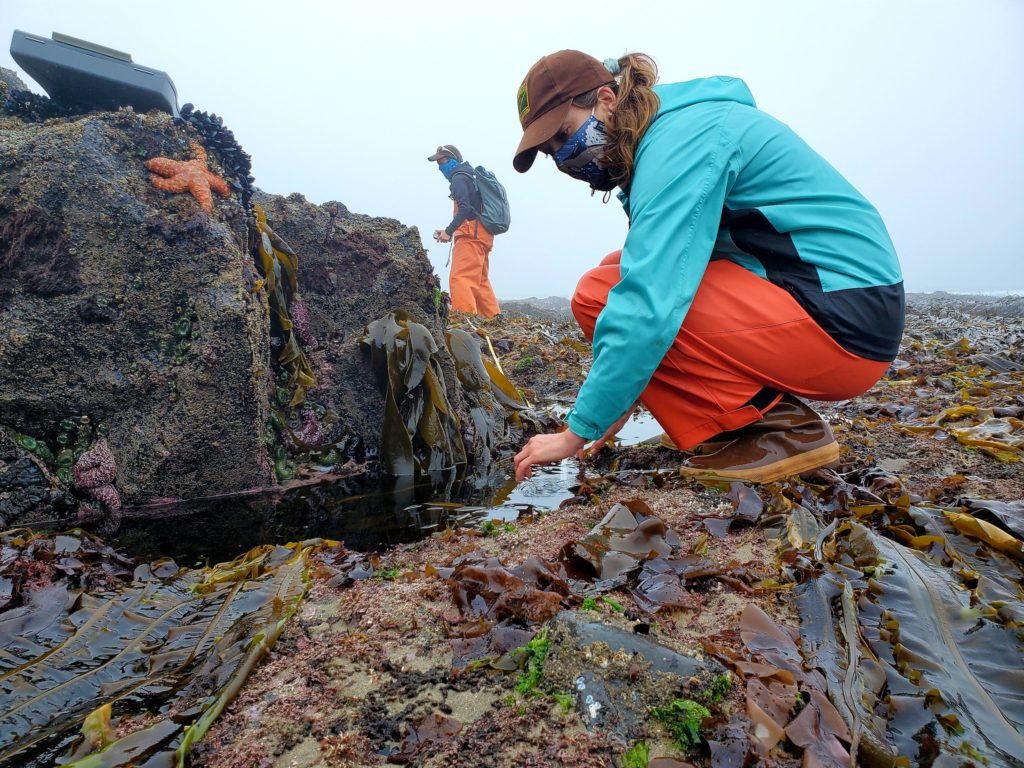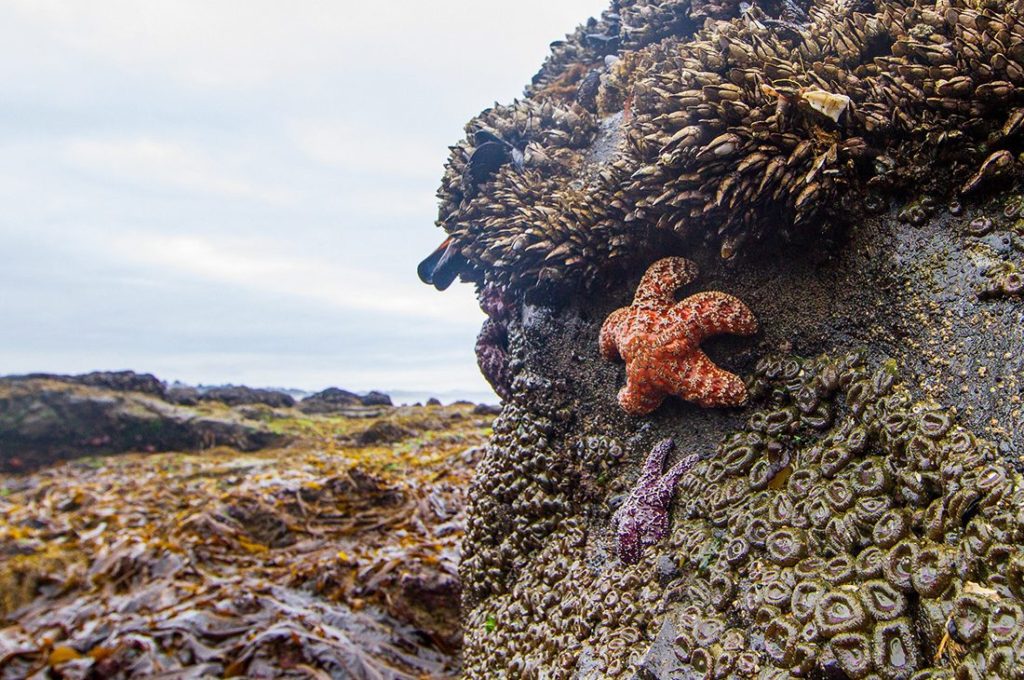
By DANA TIMS/YachatsNews.com
New surveys are showing a dramatic reversal of the 7-year-old die off that threatened to snuff out the iconic ochre sea stars populating Oregon coast tide pools.
But the outlook for other sea star species – commonly referred to as star fish, except that they aren’t true fish – remains grim, scientists and researchers say.
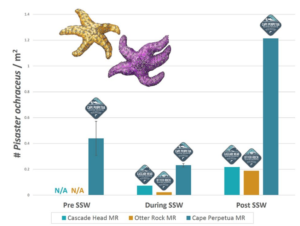
Seven years after the disease outbreak that devastated numerous types of sea stars, researchers still worry that the cascading effect of losing these so-called “keystone predators” could permanently change coastal areas from Mexico to Alaska.
“Sea stars are really the top of the food chain in both intertidal and subtidal areas,” said Melissa Miner, an ocean researcher at the University of California at Santa Cruz. “What happens to them has everything to do with the ecological balance beneath them.”
The good news for the Oregon coast is that ochre sea stars – the mussel-eating orange and purple stars that patrol tide pools – are rebounding impressively from the ‘wasting event’ that decimated their numbers in 2013 and 2014.
Recent surveys from the three Oregon marine reserve areas that have accessible intertidal habitat – Cape Perpetua, Otter Rock and Cascade Head – show ochre sea stars could, at some point, return to pre-wasting numbers.

“The disease is still out there,” said Sarah Gravem, an Oregon State University marine ecologist working in Newport. “But from what are seeing so far, I’m cautiously optimistic they’re going to stick around.”
Scientists still don’t fully understand what led to the outbreak, which caused healthy adult sea stars to first show lesions before literally melting into a gooey, broken-armed mess.
Possible causes could include a virus, warming ocean waters, human impacts or a combination of any or all of those.
Equally bewildering has been the strong resurgence of ochre stars along the coastlines of Oregon, Washington and northern California. Juveniles, in particular, have been on the comeback since 2015.
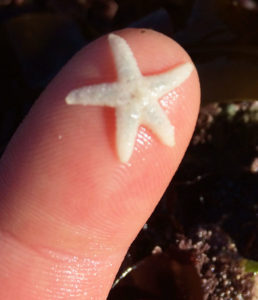
“The number of babies we started seeing not long after the disease outbreak was just astonishing,” Gravem said. “I’ve never seen anything like it.”
Scientists, she added, are still trying to figure out if there’s a correlation between the die-off and subsequent explosion in juveniles.
At their best, Gravem said, ochre sea stars are “the wolves of the intertidal. They are terrifying predators if you’re something that can’t move.”
Less rosy is the fate of the much larger sunflower sea stars – the 20-armed, meter-wide spectacles that live in subtidal areas farther from shore. Except for a few healthy populations farther north, sunflower stars appear to have all but died out along the entirety of the West Coast.
Gravem is in the final process of submitting a petition to list sunflower sea stars internationally as an endangered species, and with good reason. In Oregon, she said, mortality rates have soared since the onset of wasting disease.
In fact, only seven observations of any sunflower stars have been reported by anyone, from professional researchers, to divers, to citizen reporters, in the past three years, she said.
The problem is that the disease affects many different species of sea stars, Gravem said.
“If the sunflower tanks, the disease hangs out in other species,” she said. “Then if the sunflower starts to recover, it gets hit all over again by a disease just sitting in the on-deck circle.”
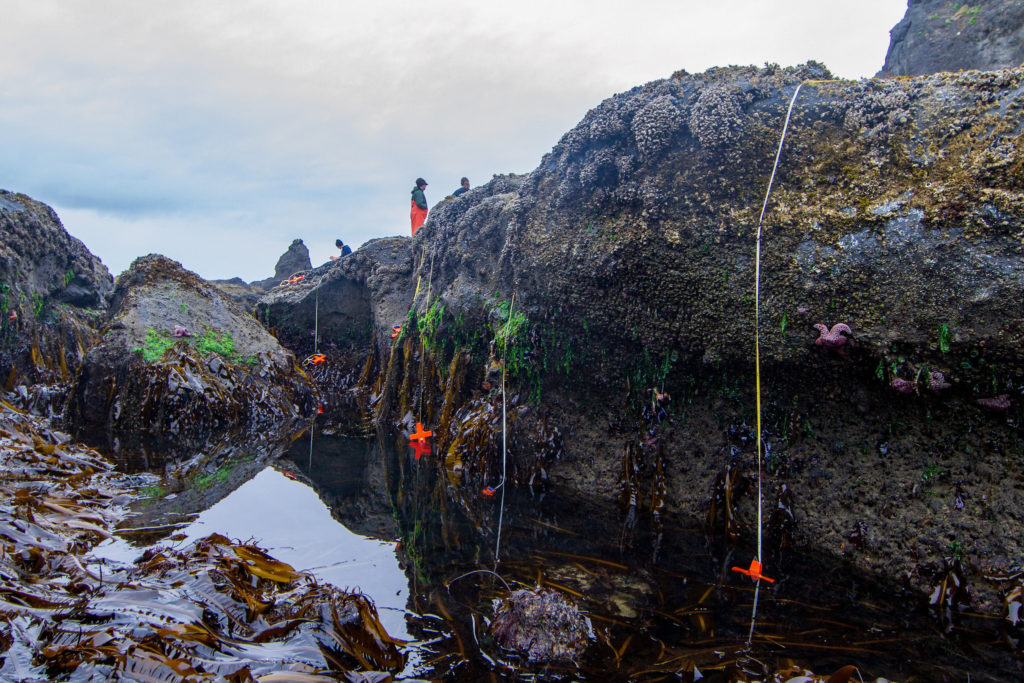
Marine reserves aid research
The knowledge base fueling new understandings of sea stars is aided by the five marine reserve areas established by the 2012 Oregon Legislature.
When the areas officially went into effect two years later, they gave researchers and citizen-scientists established places to begin long-term monitoring of plants, animals and ocean conditions.
“It’s so important to encourage people to get out into nature to any degree they can,” said Lindsay Aylesworth, ecological project leader for the Oregon Department of Fish & Wildlife’s marine reserves program. “It really gives people a connection to that place.”
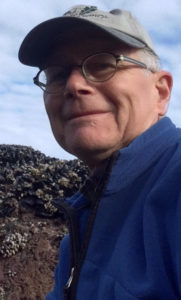
That’s how Dick Vander Schaaf first stumbled across sea star wasting disease in early 2014 at the then-newly established Cascade Head marine reserve.
The disease was so new that little had been written about it at the time. Vander Schaaf, as associate conservation director for the Nature Conservancy of Oregon’s coast and marine program, was doing routine monitoring in the reserve’s rocky intertidal portion one day when he began looking closely at apparent deformities in ochre sea stars.
“They were clearly falling apart right in front of me,” he said. “Just literally melting. I thought, ‘Wow. Something isn’t right.’”
Some quick research turned up reports of sea stars dying in vast numbers along thousands of miles of the Pacific Ocean.

Even with the resurgence, Vander Schaaf and others still see signs of older adult sea stars dying of wasting disease.
“But I’m not seeing diseased young sea stars almost at all,” he said. “And that’s great news.”
Since the ocean is so vast and difficult to fully monitor, two sea star captive breeding programs are now underway in Washington, OSU’s Gravem said. If successful, the programs could determine how to reproduce sea stars in captivity and how, when and where to successfully introduce them to the sea.
Another preservation effort is underway in the form of friendly talks with commercial crabbing operations, which sometimes regard the sea stars that make their way into crab pots as nuisances.
Noting that sea stars can regenerate broken-off rays, she added, “It would be a big benefit if they could just untangle them and throw them back.”
